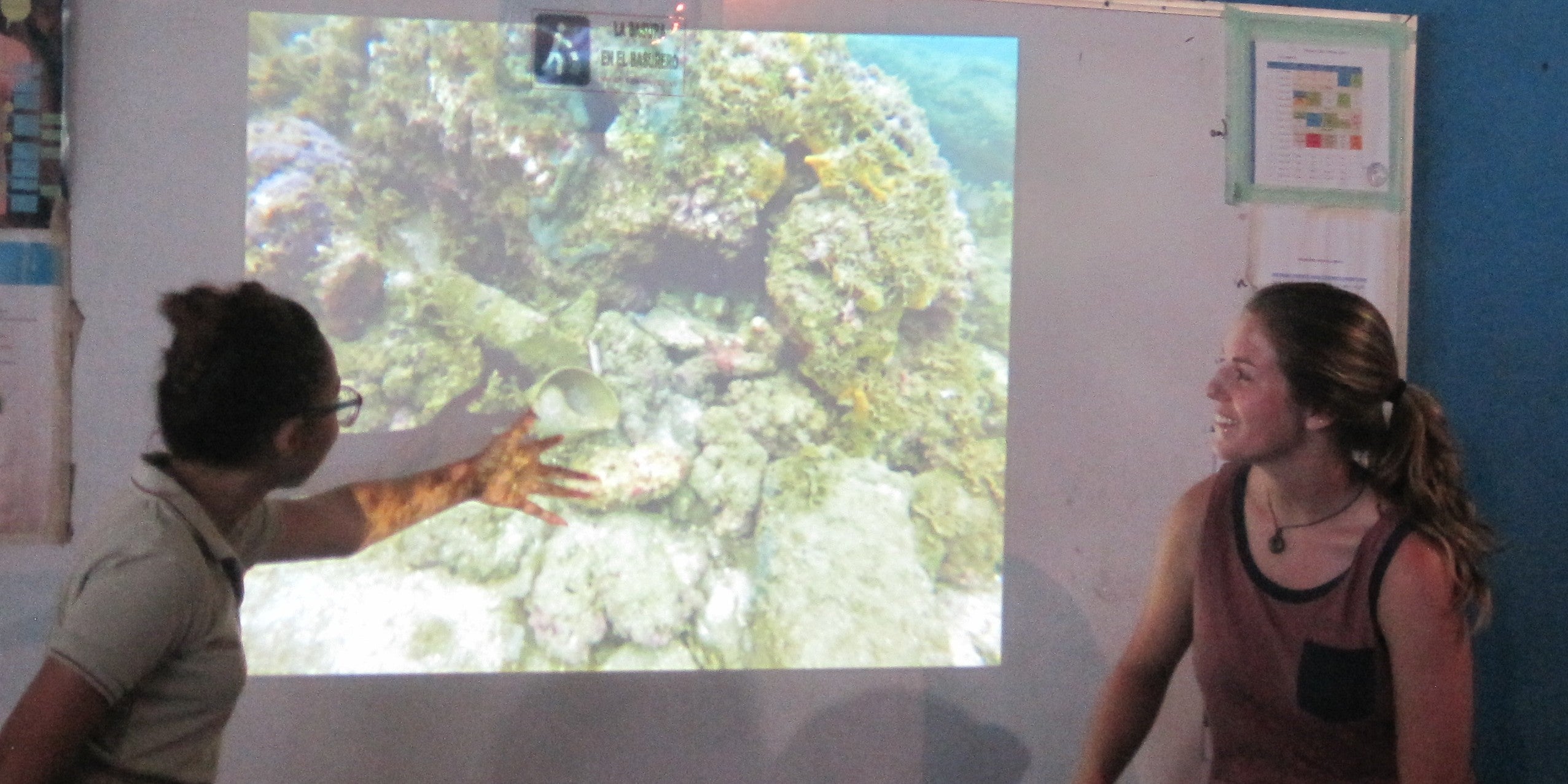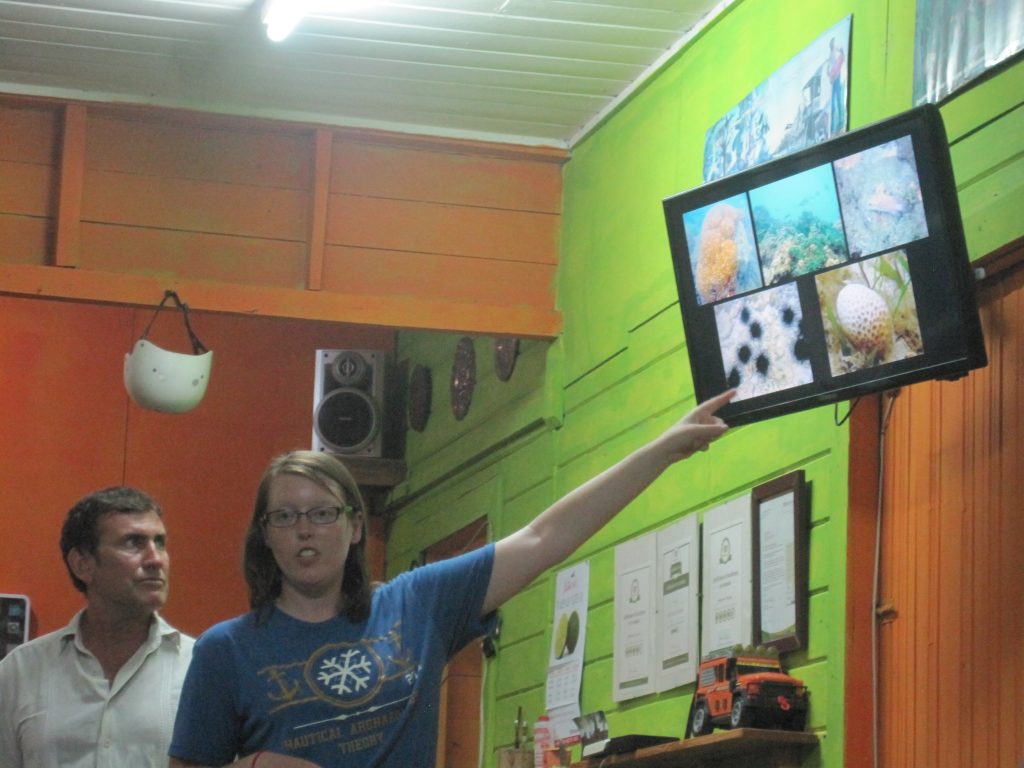We may be done diving, but we are not done working. While the last two days have been more relaxing than most of the trip, we have still be plugging away at data processing. We have started writing our site reports, we have labeled pictures, cataloged all the data, and made sure we have back-up copies of the back-ups.
We were also lucky enough to present our work to some of the locals. Last night, our entire group ventured to Willie’s Tours to tell the fishermen and community members why we have been working so hard. We put together a presentation (over 80 slides) of the history, methodology, and individual projects we have taken on. Several students, along with Dr. Harris and Dr. Richards, told the community about subjects like marine life surveys, small boat recording, maritime cultural inventory, photogrammetry, and of course the Cannon site and the Brick site.
We had several interested parties ask questions, take notes, and join the presentation late (all a sign that we were doing a good job). A little over 2 hours later, we completed our talk, thanked the community, and received many gracious thanks in return. It was extremely rewarding to see the locals so interested in our work and we were more than happy to share bits of their history with them. We even learned some more lore about the sites while we tried to interpret what happened on the wreck sites.
Our presentation went so well, in fact, that we were invited to give the same talk to the local high school. So, today, a smaller group of us walked the four blocks to the school and gave (an abbreviated) presentation to a high school class. There were moments when they were genuinely enthralled in what we were saying, and moments where we may have lost them in our archaeology jargon, but at the end of the talk we were still asked quite a few questions. One student even told us she was interested in becoming a maritime archaeologist and the school asked us how they could help with our research and become involved in the project!
It was an incredible experience to share local history with a community that cares about their community, the national park, and the stories we are uncovering. It shows how important public outreach can be.
-Hannah

